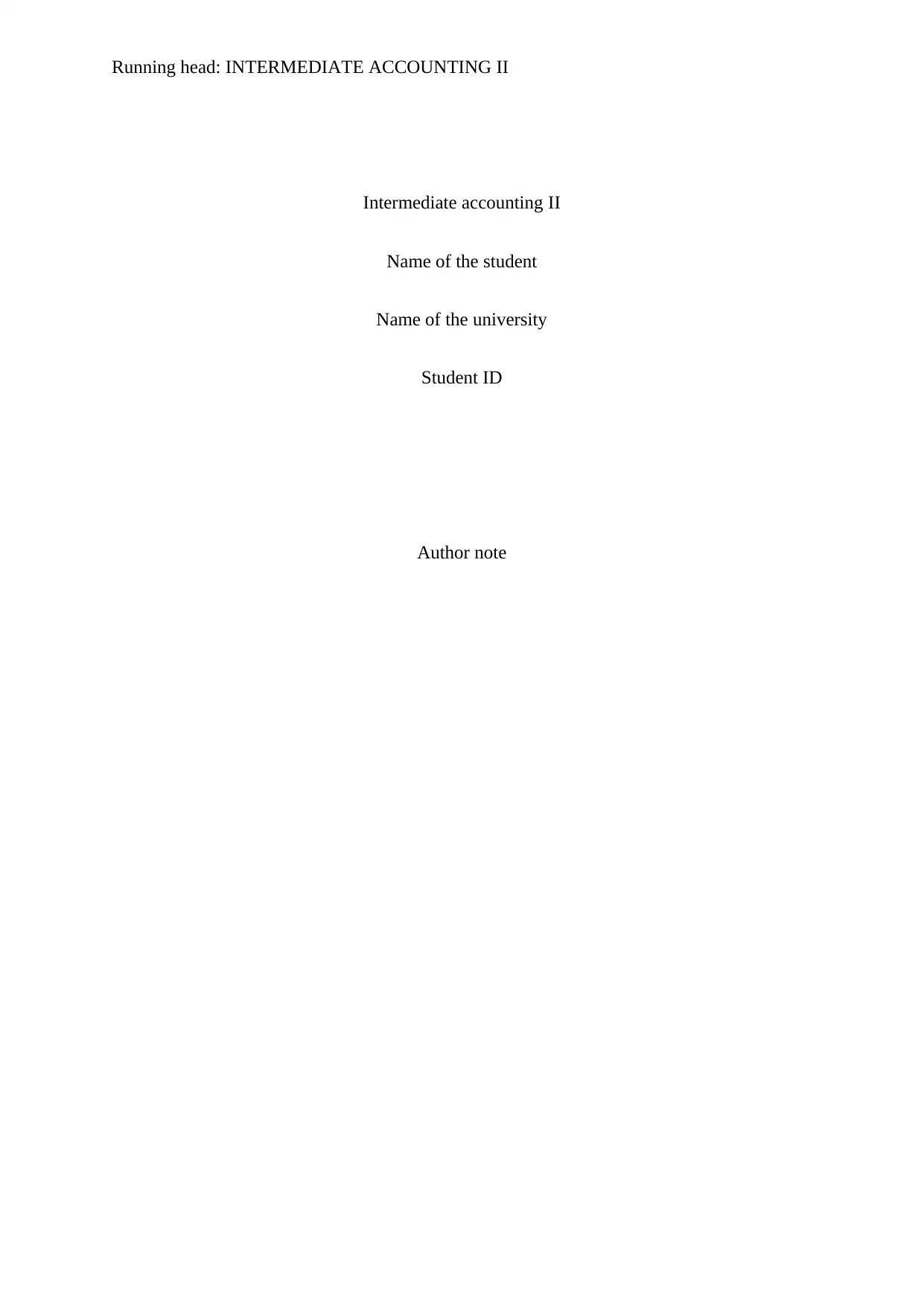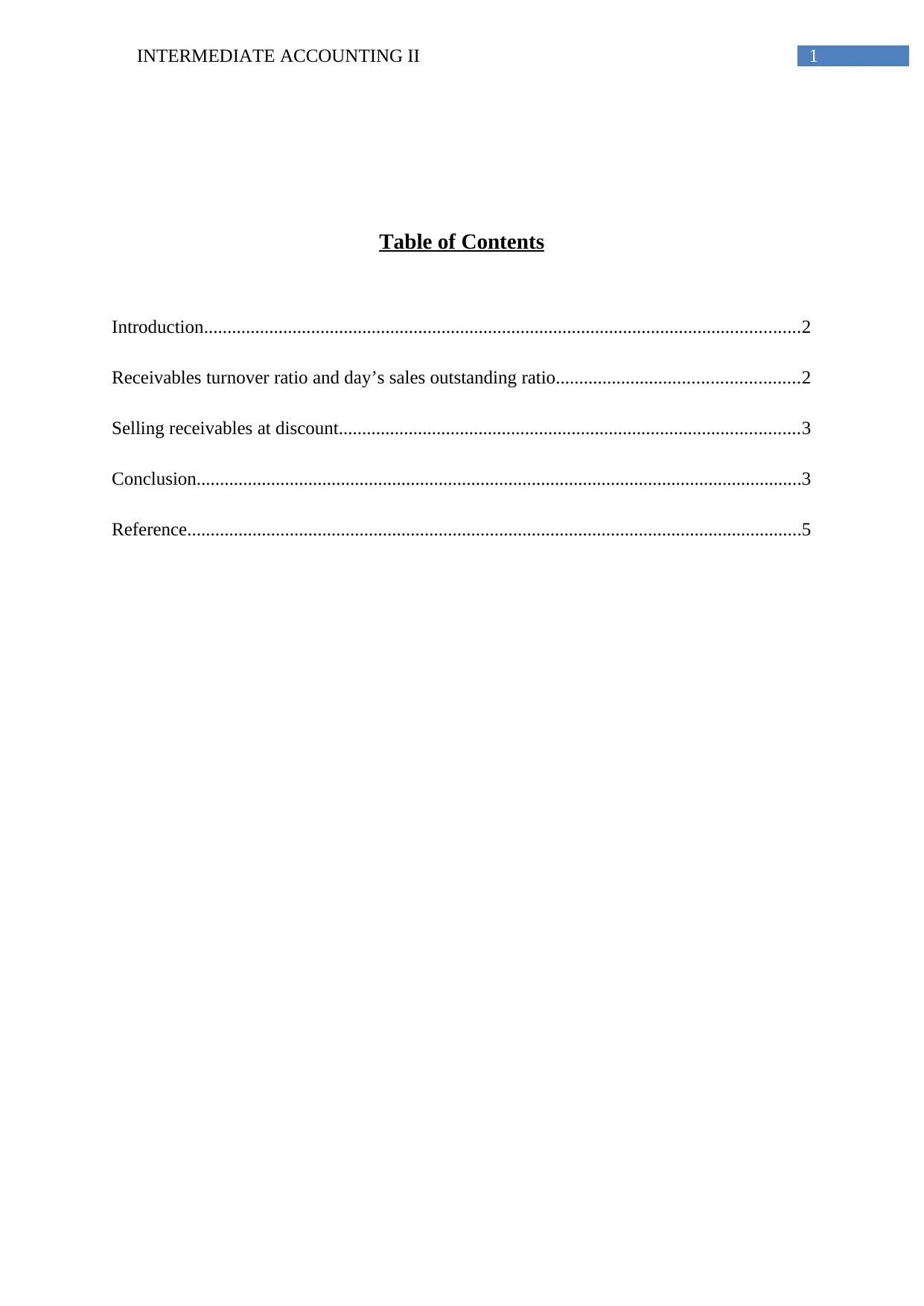Comprehensive Report: Intermediate Accounting II, Receivables Analysis
VerifiedAdded on 2023/04/20
|6
|771
|347
Report
AI Summary
This report delves into the analysis of receivables within the framework of Intermediate Accounting II. It begins with an introduction to efficiency ratios, specifically the receivables turnover ratio and the days' sales outstanding ratio, which are crucial for assessing a company's effectiveness in collecting cash from customers. The report provides a detailed explanation of these ratios, including how they are calculated and interpreted, using examples to illustrate their practical application. Furthermore, the report examines the practice of selling receivables at a discount, exploring the various reasons why a company might choose this strategy, such as the need for fast cash, freeing up working capital, and retaining ownership. The conclusion summarizes the key findings, emphasizing the importance of these ratios and the strategic implications of discounting receivables. The report provides a comprehensive overview of these key concepts in financial accounting.
1 out of 6













![[object Object]](/_next/static/media/star-bottom.7253800d.svg)